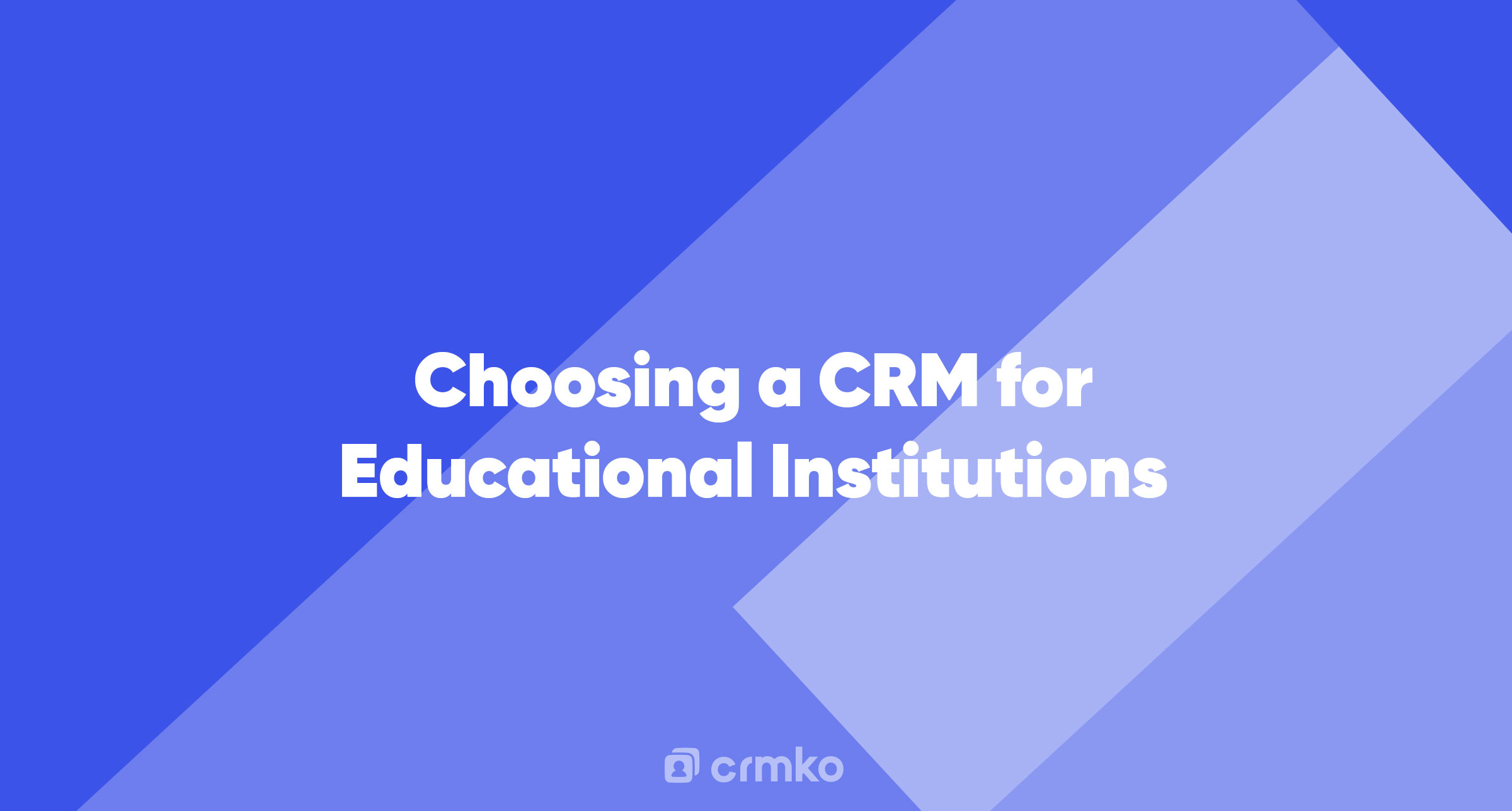Educational institutions are not just centers of learning but also complex organizations that need to manage relationships with a diverse group of stakeholders, including students, parents, alumni, faculty, and more. To streamline this process, many institutions are turning to Customer Relationship Management (CRM) systems. But with a plethora of options available, how does one go about choosing CRM for educational institutions? This article aims to guide you through the intricacies of this decision-making process.
Understanding the Need for CRM in Educational Institutions
Before diving into the specifics of choosing CRM, it's essential to understand why a CRM system is crucial for educational institutions. These institutions face unique challenges, such as student recruitment, alumni engagement, and donor management. A CRM system can assist in:
- Student Recruitment: Track prospective students, manage inquiries, and streamline the admissions process.
- Alumni Engagement: Maintain updated records of alumni, organize reunions, and foster a sense of community.
- Donor Management: Track donations, manage donor relationships, and run fundraising campaigns.
- Faculty and Staff Management: Manage faculty details, schedules, and communication.
- Event Management: Organize seminars, workshops, and other events efficiently.
Factors to Consider When Choosing CRM for Educational Institutions
Given the unique needs of educational institutions, it's crucial to select a CRM system tailored to these requirements. Here are some factors to consider:
- Industry-Specific Features: When choosing CRM for educational institutions, it's essential to opt for a system that offers features tailored to the education sector. This could include modules for admissions, alumni management, and event management.
- User-Friendly Interface: Educational institutions might have users who are not tech-savvy. Hence, the CRM system should be intuitive and easy to use.
- Integration Capabilities: Institutions often use various software solutions, from Learning Management Systems (LMS) to accounting software. The chosen CRM should integrate seamlessly with these tools.
- Scalability: As institutions grow, the CRM system should be able to accommodate more users, courses, and data.
- Data Security: Given the sensitive nature of student data, security should be a top priority when choosing CRM for educational institutions. Ensure that the CRM you choose offers features like encryption, two-factor authentication, and regular backups.
- Cost: Educational institutions often operate on tight budgets. While it's essential not to compromise on quality, it's equally important to ensure that the CRM system offers value for money.
- Training and Support: Opt for a CRM provider that offers robust training and support, ensuring that the institution can make the most of the system.
Popular CRM Options for Educational Institutions
While the best CRM for your institution will depend on specific needs, here are some popular options tailored for the education sector:
- Salesforce for Higher Ed: A cloud-based solution tailored for educational institutions, it offers features like student recruitment, alumni engagement, and donor management.
- HubSpot CRM: Known for its user-friendly interface, HubSpot CRM can be customized to cater to the needs of educational institutions.
- Ellucian CRM: Designed specifically for higher education, it offers modules for recruitment, admissions, and alumni relations.
Conclusion
In the competitive world of education, institutions need to stay ahead of the curve, not just in terms of academic offerings but also in managing relationships with stakeholders. A robust CRM system can play a pivotal role in streamlining processes, enhancing engagement, and driving growth. When choosing CRM for educational institutions, it's essential to consider factors like industry-specific features, scalability, and security. By making an informed choice, institutions can ensure that they have a tool that not only meets their current needs but also scales with their growth.
